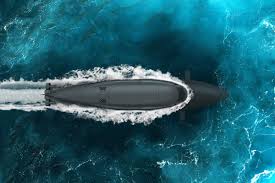
Breaking News
 Quantum walkie-talkie: China tests world's first GPS-free radio for border zones
Quantum walkie-talkie: China tests world's first GPS-free radio for border zones
 RIGHT NOW!: Why was lawyer Van Kessel, of the civil case on the merits in the Netherlands, arrested?
RIGHT NOW!: Why was lawyer Van Kessel, of the civil case on the merits in the Netherlands, arrested?
 PENSION FUNDS PANIC BUYING SILVER – Ratio Below 60 Triggers $50B Wave (Danger Next Week)
PENSION FUNDS PANIC BUYING SILVER – Ratio Below 60 Triggers $50B Wave (Danger Next Week)
 Dollar set for worst year since 2017, yen still in focus
Dollar set for worst year since 2017, yen still in focus
Top Tech News
 EngineAI T800: Born to Disrupt! #EngineAI #robotics #newtechnology #newproduct
EngineAI T800: Born to Disrupt! #EngineAI #robotics #newtechnology #newproduct
 This Silicon Anode Breakthrough Could Mark A Turning Point For EV Batteries [Update]
This Silicon Anode Breakthrough Could Mark A Turning Point For EV Batteries [Update]
 Travel gadget promises to dry and iron your clothes – totally hands-free
Travel gadget promises to dry and iron your clothes – totally hands-free
 Perfect Aircrete, Kitchen Ingredients.
Perfect Aircrete, Kitchen Ingredients.
 Futuristic pixel-raising display lets you feel what's onscreen
Futuristic pixel-raising display lets you feel what's onscreen
 Cutting-Edge Facility Generates Pure Water and Hydrogen Fuel from Seawater for Mere Pennies
Cutting-Edge Facility Generates Pure Water and Hydrogen Fuel from Seawater for Mere Pennies
 This tiny dev board is packed with features for ambitious makers
This tiny dev board is packed with features for ambitious makers
 Scientists Discover Gel to Regrow Tooth Enamel
Scientists Discover Gel to Regrow Tooth Enamel
 Vitamin C and Dandelion Root Killing Cancer Cells -- as Former CDC Director Calls for COVID-19...
Vitamin C and Dandelion Root Killing Cancer Cells -- as Former CDC Director Calls for COVID-19...
 Galactic Brain: US firm plans space-based data centers, power grid to challenge China
Galactic Brain: US firm plans space-based data centers, power grid to challenge China
Stealthy diver delivery boat transforms into a submarine

Currently being developed by UK firm SubSea Craft, VICTA measures 11.95 meters long by 2.3 m wide (39.2 by 7.5 ft), and seats six divers plus a pilot and a navigator. Its matte black composite hull is made of carbon fiber with a Diab foam core, for a good strength-to-weight ratio.
When first setting out on a mission, VICTA moves quickly across the surface like a regular boat. In this mode, it's powered by a customized Seatek 725+ diesel engine which outputs 725 bhp to a set of Konsberg Kamewa water jets. In its final form, it should have a top surface speed of 40 knots (46 mph or 74 km/h), a cruising speed of 30 knots (35 mph or 56 km/h) and a fuel range of 250 nautical miles (288 miles or 463 km).
Once it needs to get stealthy, VICTA stops and floods its cabin, submerging within two minutes. It then becomes a "wet sub," meaning that its occupants are immersed in water, and are wearing dive gear. The divers and crew all breathe from an onboard open circuit air system, so the divers don't deplete the air supply in their tanks – the onboard system should keep all eight people breathing for four hours.



